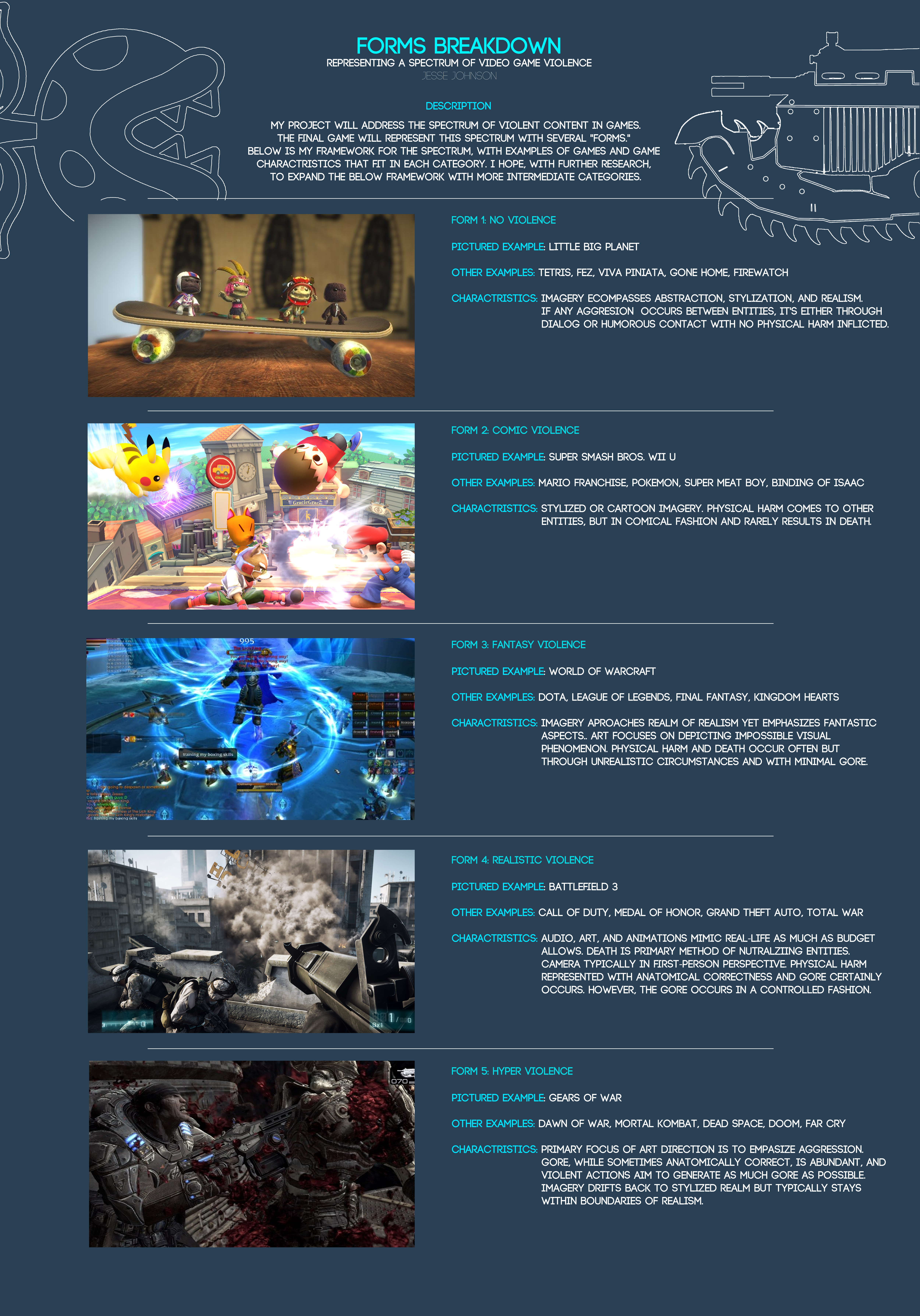
Assessing the Role of Violence in Entertainment Games

Violence has been an integral component of entertainment media for the entirety of recorded human history. Every new breakthrough in media technology has faced its share of controversy directed at its ability to adversely affect the behaviors of its audience, as is the case with video games. The interactivity of video games puts the audience into an active role as an agent that performs potentially, and commonly, violent acts, which has alarmed parents, policy makers, and academics. The first-person shooter format used by some of the most popular contemporary video games especially pushes connects the real and virtual world by putting the player into increasingly more realistic environments and exposing the player to increasingly more detailed depictions of violence. The bulk of significant studies directed towards video games focuses on the effects the games have on players. This thesis shifted this focus instead on the players and looked at why violence is appealing outright, not necessarily the immediate and long-term behavioral effects of violent content. Gun Hero is a game based on this research, which used case studies of related inquiries and an extensive historical study of violence in literature, entertainment, and video games. The game analyzes player’s physical and emotional reactions to see how and why people are entertained by different characteristics of violence. While providing potential insight into why violence entertains game players, the game also illustrates the Violence Spectrum, a video game categorization tool created for the study and the fundamental direction for the game’s design. The study and game product of the thesis explores how different forms along the Violence Spectrum appeals to game players due to historical ties to culture, connection of players to virtual worlds, and the fulfilment of fundamental psychological needs.

